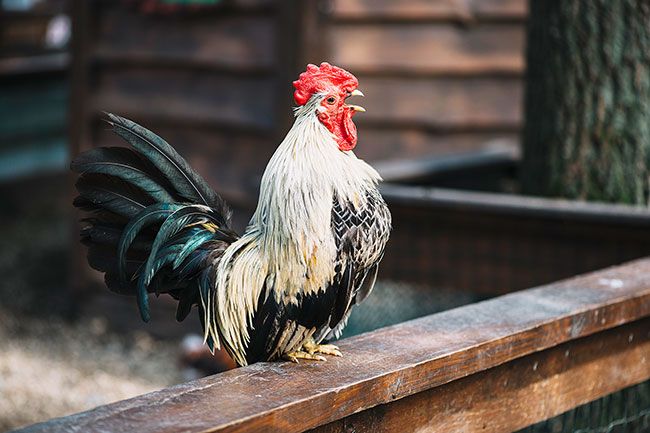Making life run smoother in Yamhill County farm country

When I ask people what they love most about Yamhill County, they almost invariably say, “I love the open spaces, the small-town feel, the abundant natural resources.”
But many of us make our living on local resource lands, and many of those open spaces are commercially farmed by our friends and neighbors. We preserve land with farm-use zoning to protect that kind of activity.
What should you expect, then, if your zeal for open spaces leads you to move in next door to land under active cultivation?
After growing up on the coast, moving to a medium-sized city, then living in the remote North Cascades, my wife and I bought 17.5 acres of Yamhill County farmland in 2006.
We knew how to farm. In fact, we were farmed rented acreage before we made the move
But we had never lived in an area zoned for exclusive farm use. It took time, mistakes and self-education for our family to learn how to live in harmony in a commercial agriculture landscape.
Now, in my role as a county commissioner, I meet with, talk with and listen to many people who live in our county’s ag zones. That includes people who are not actively farming, who have settled in farm country simply out of a love for wide-open spaces.
To prepare residents for moving to farmland, the awesome and friendly Yamhill County Planning Department has published a pamphlet that can be found online at www.co.yamhill.or.us/sites/default/files/land use brochure.pdf. Beyond this basic information, it’s important for folks to have reasonable expectations about adjacent farms, quarries and timber stands.
Rural newcomers also need to understand the history and intent of EFU zoning. It’s important for them to appreciate the protections afforded to reasonable farming practices, and learn how to talk with neighboring farmers about those practices when the need arises.
What commercial uses are allowed on the land that surrounds you?
If you live next to mineral resource lands, you can learn what is allowed in the MR zone at www.co.yamhill.or.us/sites/default/files/zoning_404_872.pdf. For the EFU zone, visit www.co.yamhill.or.us/sites/default/files/0402_903_0.pdf. For commercially managed timberlands, visit www.co.yamhill.or.us/sites/default/files/0401_872_0.pdf.
If you’re unsure about the zoning of surrounding acreage, you can find detailed maps on the county’s GIS page. The URL is www.co.yamhill.or.us/gis.
So what’s the underlying purpose of the EFU zone, which covers much more of the county that mining and forestry zones?
County code tells us in Section 402.01: “The purpose of the Exclusive Farm Use District is to identify and protect land designated as Exclusive Farm Use on the Comprehensive Plan that is suitable and desirable for commercial agricultural operations and other uses which are compatible with such operations… In Exclusive Farm Use Districts, nonfarm residential and other development which might likely be affected by normal farm management practices, will be limited or prohibited so as to maximize the productivity potential of vicinity farmlands.”
In other words, EFU is intended for commercial agricultural use. Other uses should be minimized to reduce conflicts with farming. Even dwellings are intended to support agriculture.
Non-farm uses in the EFU zone must meet the “farm impacts test.” According to Oregon Revised Statutes 215.296(1), that means non-farm activity cannot “force a significant change in accepted farm or forest practices on surrounding lands devoted to farm or forest use or significantly increase the cost of accepted farm or forest practices on surrounding lands devoted to farm or forest use.”
To the extent the county has discretion in decisions, it has to ensure new uses will not significantly affect existing farm operations.
We’ve had EFU zoning since 1963 (ORS Chapter 215), but it underwent a major overhaul in 1973, when it became part of a statewide land use strategy with the bi-partisan passage of Senate Bill 100. SB 100 required ever city and county to develop a comprehensive land use plan in a process to be overseen by the newly established Department of Land Conservation and Development and its governing Land Conservation and Development Commission.
Farmland protection has undergone lesser updates every decade since.
At the state level, LCDC establishes statewide goals and priorities. Its volunteer members are appointed by the governor and confirmed by the Senate.
The DLCD is LCDC’s administrative arm. It is tasked with implementing land use.
The agecy states in Oregon Statewide Planning Goals: 16) “Zoning applied to agricultural land shall limit uses which can have significant adverse effects on agriculture and forest land,” and 17) “Non-farm uses permitted within farm use zones ... shall be minimized to allow for maximum agricultural productivity.”
Sometimes your farmer neighbors will do things that seem like nuisances. They will spread manure, run bright lights at night, dig trees on the weekend, spray pesticides or herbicides, or employ wildlife deterrents.
It’s totally normal to be annoyed, perhaps even angered. But farm practices are protected by the state under the “right to farm” statute, found online at www.oregon.gov/ODA/shared/Documents/Publications/NaturalResources/RightToFarm.pdf .
The document begins, “Legislation ... declares farm and forest practices as critical to the welfare of the Oregon economy, and establishes a right-to-farm law. This law protects growers from court decisions based on customary noises, smells, dust, or other nuisances associated with farming. It also limits local governments and special districts from administratively declaring certain farm and forest products to be nuisances or trespasses.” (ORS 30.930)
Practices deemed reasonable, prudent and generally accepted are explicitly protected under the statute. However, farmers and ranchers can be proactive and responsive in their interaction with non-farming neighbors.
I’ve found farmers generally get the best result when they communicate early and often. If you want to farm in peace, here’s some advice:
Don’t assume others know what you know. Educate adjacent neighbors and growers about your practices.
Build a “goodwill” bank account in advance by explaining the timing, nature and duration of practices that might stir concern. Share any options you might have. And help them understand what’s reasonable, prudent and generally accepted for your crop and circumstances..
On the non-farming end, if you are adjacent to a farm where odor, dust or noise is becoming an issue, you will also fare best by being proactive.
Approach the farmer with respect, assuming best intentions on his part. If that doesn’t resolve the matter, you can pursue mediation through the Oregon Department of Agricultures at 503-986-4565.
While a broad range of farm practices enjoys protection in EFU zones, the “right to farm” law does not protect a farmer from damaging a neighboring farm or putting anyone at risk of serious injury or death. There are limits.
In this piece, I’ve shared some resources on the history, protection and intent of EFU zoning. Now it’s your turn.
If you live in an EFU zone, take the time to get to know your farmer neighbors, learn about the practices they employ in your areas, and remember that commercial agricultural activity takes primacy.
We have the privilege of making our homes in a beautiful, wide-open landscape. But the state and county intend that living here should support farming here. So let’s support the farming even as we enjoy the place.









Comments